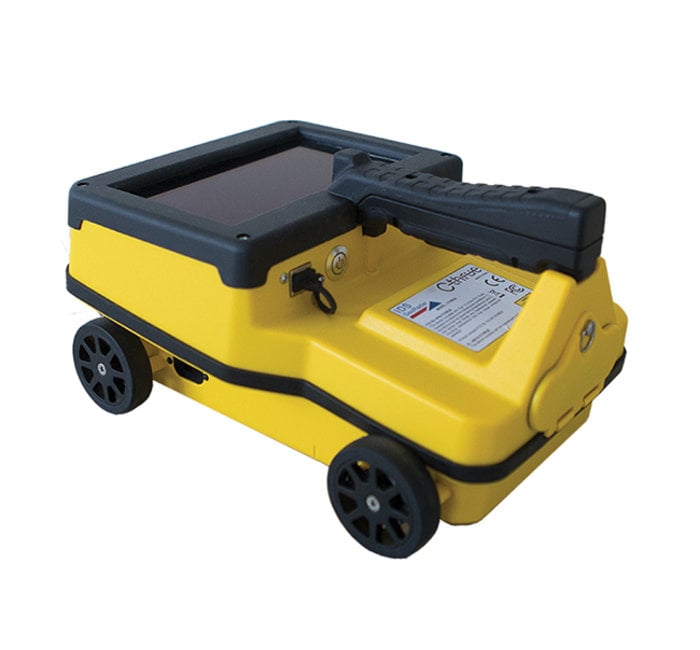RainierGPR Service Areas: Top Concrete Scanning Services Across Regions
RainierGPR Service Areas: Top Concrete Scanning Services Across Regions
Blog Article
Concrete Scanning: A Vital Action In The Direction Of Guaranteeing Structural Integrity and Security
In the realm of building and infrastructure maintenance, the significance of concrete scanning can not be overstated. By employing innovative innovation and approaches, concrete scanning offers as a pivotal device in making certain that the integrity and security of buildings and bridges are supported to the highest possible requirements.
Relevance of Concrete Scanning
Concrete scanning plays a critical function in ensuring the architectural honesty and safety of structures and facilities tasks. By utilizing advanced innovations such as ground-penetrating radar (GPR) and electro-magnetic induction, experts can non-destructively evaluate concrete structures to discover possible defects, spaces, ingrained objects, and reinforcement format. This process allows very early discovery of abnormalities that can jeopardize the stability of a framework, protecting against costly problems and making certain the safety of residents.
Concrete scanning is specifically vital during the planning and building phases of a task. Prior to drilling, cutting, or coring right into concrete, scanning assists determine the exact areas of rebar, post-tension wires, and other embedded components, reducing the risk of unintentional hits that might cause architectural weaknesses. In addition, concrete scanning aids in quality assurance by verifying the density of concrete covers and spotting any disparities that may affect the overall longevity of the structure. Ultimately, buying concrete scanning solutions is not just a proactive measure to minimize threats however also a fundamental step in the direction of preserving the long-term security and stability of buildings and framework.
Modern Technology for Concrete Evaluation

Benefits of Early Discovery
Prompt detection of structural problems can significantly mitigate risks and guarantee the durability of building and construction tasks. By recognizing possible troubles early on in the building process, stakeholders can take positive steps click to find out more to deal with concerns before they rise right into bigger and much more costly issues. One of the key benefits of very early discovery is the avoidance of structural failings, which can present severe security risks and lead to task hold-ups and economic losses.
Moreover, very early discovery enables timely repair services and maintenance, which can help expand the life-span of the structure. By dealing with issues quickly, construction groups can prevent costly repair work or perhaps the need for early replacement of architectural parts. This positive method not just saves money and time however likewise enhances the general safety and sturdiness of the building and construction job.
Furthermore, very early detection can improve project preparation and decision-making by offering stakeholders with beneficial insights right into the condition of the framework. Armed with this details, project supervisors can make informed options relating to construction approaches, materials, and timelines, resulting in more reliable and effective job outcomes.
Making Certain Architectural Stability
Ensuring the architectural stability of a construction job is critical to its security and durability. Concrete scanning plays a crucial role in ensuring structural stability by discovering prospective problems such as voids, delamination, or support deterioration that can endanger the stability of the you could check here structure over time.
By making use of innovative scanning modern technologies like ground-penetrating radar (GPR) and electro-magnetic induction, building experts can non-invasively inspect concrete structures to recognize locations of worry below the surface. This aggressive approach permits the very early discovery of weak points or flaws, allowing timely repairs or reinforcement to stop structural failings.
Regular concrete scanning throughout various building phases and throughout the life process of a structure can aid maintain its security, reduce threats, and make sure the safety of residents. By prioritizing architectural stability via concrete scanning, building projects can enhance their strength and longevity, eventually adding to higher security and longevity.
Stopping Crucial Failings
To protect against disastrous occasions, precise surveillance and proactive maintenance are necessary in averting important failings within structural frameworks. Discovering potential issues prior to they rise is key to avoiding architectural failings. Executing regular examinations, such as concrete scanning, can reveal hidden flaws like gaps, cracks, or corrosion that might compromise the stability of a framework. By making use of advanced scanning technologies like Ground Passing through Radar (GPR) or Concrete X-ray, engineers can non-destructively examine the problem of concrete and recognize weak factors that call for reinforcement or fixing - RainierGPR Service Areas.

Final Thought
Finally, concrete scanning plays a crucial role in guaranteeing structural honesty and safety by utilizing advanced modern technology for early detection of potential concerns. This aggressive technique assists prevent vital failures and ensures the security of frameworks. It is important to focus on concrete examination as a common method to safeguard the longevity and safety of buildings and framework.
Concrete scanning plays an essential duty in making certain the architectural integrity and safety and security of structures and facilities tasks. Furthermore, concrete scanning aids in quality control by verifying the density of concrete covers and discovering any disparities that may affect the overall longevity of the structure. Concrete scanning plays an essential duty in guaranteeing structural security by discovering possible problems such as gaps, delamination, or reinforcement deterioration that can compromise the stability of the structure over time.

In conclusion, concrete scanning plays a critical function in ensuring architectural honesty and safety and security by using sophisticated innovation for early discovery of prospective problems.
Report this page